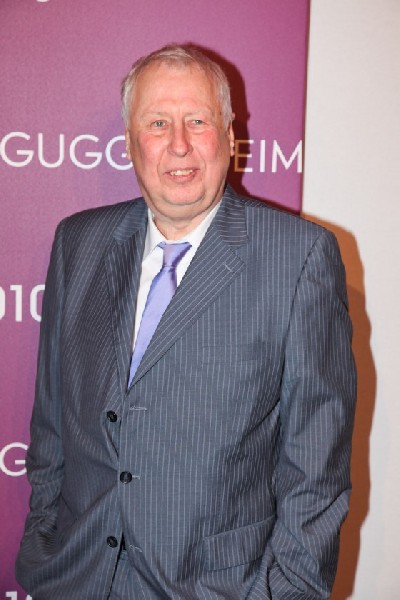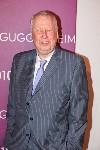Hans-Peter Feldmann at Guggenheim Museum
Hugo Boss Prize Winner Opens May 20
By: Boss - Apr 30, 2011
An exhibition of the work of German artist Hans-Peter Feldmann (b. 1941, Düsseldorf), winner of the HUGO BOSS PRIZE 2010, will be on view at the Solomon R. Guggenheim Museum, May 20–November 2, 2011. Feldmann is the eighth artist to win this prestigious biennial award, established in 1996 by HUGO BOSS and the Solomon R. Guggenheim Foundation to recognize significant achievement in contemporary art.
Feldmann has spent over four decades conducting a profound investigation into the influence of the visual environment on our subjective reality. Composing images and objects into serial archives, uncanny combinations, and other illuminating new contexts, his work unearths the latent associations and sentiments contained within the landscape of daily life. As the 2010 prizewinner, Feldmann received an honorarium of $100,000, and for his solo exhibition at the Guggenheim, he has chosen to pin this exact amount in overlapping one-dollar bills to the gallery walls.
The installation, which uses money that has previously been in circulation, extends the artist’s lifelong obsession with collecting familiar material into simple groupings that reveal a nuanced play of similarity and difference. Throughout his practice, Feldmann has frequently demonstrated the impulse to divide an apparent whole into separate components; he has photographed every item in a woman’s wardrobe (All the clothes of a woman, 1973), presented individual images of the strawberries that make up a pound of fruit (One Pound Strawberries, 2005), and created a sequence of 100 portraits showing individuals of every age in a collective lifespan of a century (100 Years, 2001).
Feldmann also has a history of resisting the art world’s commercial structures, issuing his work in unsigned, unlimited editions and at one point retiring from art making altogether for nearly a decade in the 1980s. Bank notes, like artworks, are objects that have no inherent worth beyond what society agrees to invest them with, and in using them as his medium, Feldmann raises questions about notions of value in art. But his primary interest in the serial display of currency lies less in its status as a symbol of capitalist excess than in its ubiquity as a mass-produced image and a material with which we come into contact every day. At its core, this formal experiment presents an opportunity to experience an abstract concept—a numerical figure and the economic possibilities it entails—as a visual object and an immersive physical environment.
THE HUGO BOSS PRIZE 2010: Hans-Peter Feldmann is organized by Katherine Brinson, Assistant Curator, Solomon R. Guggenheim Museum.
In November 2010, Feldmann was selected as the prizewinner from a shortlist of finalists that included Cao Fei, Roman Ondák, Walid Raad, Natascha Sadr Haghighian, and Apichatpong Weerasethakul. The award is given to an artist whose work represents a significant development in contemporary art and sets no restrictions in terms of age, gender, race, nationality, or medium.
The jury for the 2010 prize was chaired by Nancy Spector, Deputy Director and Chief Curator, Solomon R. Guggenheim Foundation, and the jurors were Udo Kittelmann, Director, Nationalgalerie, Berlin; Alexandra Munroe, Samsung Senior Curator of Asian Art, Solomon R. Guggenheim Museum; Yasmil Raymond, Curator, Dia Art Foundation, New York; Joan Young, Associate Curator of Contemporary Art and Manager of Curatorial Affairs, Solomon R. Guggenheim Museum; and Tirdad Zolghadr, independent writer and curator. In the official award statement, the jury described its selection: “A key influence on generations of younger artists, Feldmann’s work exhibits a vitality and keen originality that places it among the most compelling work being produced today. It is this critical engagement with the moment that we recognize in awarding him the HUGO BOSS PRIZE 2010.”
Publication
In conjunction with the HUGO BOSS PRIZE 2010, the Guggenheim has published a catalogue that explores the work of the 2010 finalists and features a specially commissioned project by each artist. The catalogue, designed by Project Projects, includes essays by Maria Lind, Jessica Morgan, Yasmil Raymond, Angeline Scherf, Helena Tatay, and Kaelen Wilson-Goldie, with an introduction by Katherine Brinson. It is available for $19.95 at guggenheim.org.
About the HUGO BOSS PRIZE
Last year marked the eighth presentation of the HUGO BOSS PRIZE. Since its inception in 1996, the prize has been awarded to American artist Matthew Barney (1996), Scottish artist Douglas Gordon (1998), Slovenian artist Marjetica Potrc (2000), French artist Pierre Huyghe (2002), Thai artist Rirkrit Tiravanija (2004), British artist Tacita Dean (2006), and Palestinian artist Emily Jacir (2008). Previous finalists have been Laurie Anderson, Janine Antoni, Cai Guo-Qiang, Stan Douglas, and Yasumasa Morimura in 1996; Huang Yong Ping, William Kentridge, Lee Bul, Pipilotti Rist, and Lorna Simpson in 1998; Vito Acconci, Maurizio Cattelan, Michael Elmgreen and Ingar Dragset, Tom Friedman, Barry Le Va, and Tunga in 2000; Francis Alÿs, Olafur Eliasson, Hachiya Kazuhiko, Koo Jeong-a, and Anri Sala in 2002; Franz Ackermann, Jeroen de Rijke and Willem de Rooij, Rivane Neuenschwander, Simon Starling, and Yang Fudong in 2004; Jennifer Allora & Guillermo Calzadilla, John Bock, Damián Ortega, Aïda Ruilova, and Tino Sehgal in 2006; Christoph Büchel, Patty Chang, Sam Durant, Joachim Koester, and Roman Signer in 2008.
About HUGO BOSS AG
Since 1995 HUGO BOSS has provided critical support to many Guggenheim programs. In addition to the prize, the company has helped make possible retrospectives of the work of Matthew Barney (2003), Georg Baselitz (1995), Ross Bleckner (1995), Francesco Clemente (1999–2000), Ellsworth Kelly (1996–97), Robert Rauschenberg (1997–98), and James Rosenquist (2003–04); the presentation Art in America: Now (2007) in Shanghai; the Felix Gonzalez-Torres (2007) and Ed Ruscha (2005) exhibitions in the U.S. Pavilion of the Venice Biennale; and the exhibition theanyspacewhatever (2008–09) at the Solomon R. Guggenheim Museum.
About the Solomon R. Guggenheim Foundation
Founded in 1937, the Solomon R. Guggenheim Foundation is dedicated to promoting the understanding and appreciation of art, primarily of the modern and contemporary periods, through exhibitions, educational programs, research initiatives, and publications. Currently the Solomon R. Guggenheim Foundation owns and operates the Guggenheim Museum on Fifth Avenue in New York and the Peggy Guggenheim Collection on the Grand Canal in Venice, and provides programming and management for the Guggenheim Museum Bilbao. The Deutsche Guggenheim in Berlin is the result of a collaboration, begun in 1997, between the Guggenheim Foundation and Deutsche Bank. The Guggenheim Abu Dhabi, a museum of modern and contemporary art designed by Frank Gehry on Saadiyat Island and adjacent to the main island of Abu Dhabi city, the capital of the United Arab Emirates, is currently in progress. More information about the foundation can be found at guggenheim.org.
VISITOR INFORMATION
Admission: Adults $18, students/seniors (65+) $15, members and children under 12 free. Admission includes audio-guide tour.
Museum Hours: Sun–Wed 10 am–5:45 pm, Fri 10 am–5:45 pm, Sat 10 am–7:45 pm, closed Thurs. On Saturdays beginning at 5:45 pm, the museum hosts Pay What You Wish.


